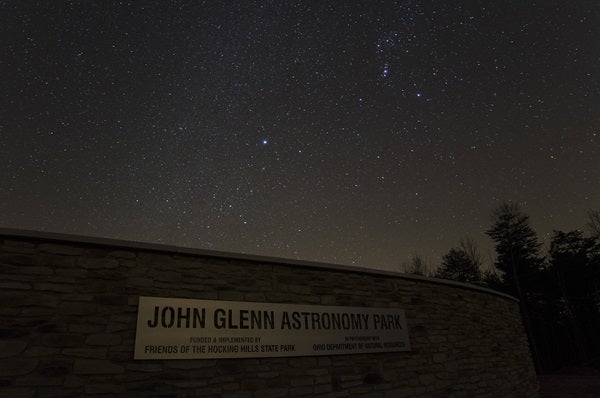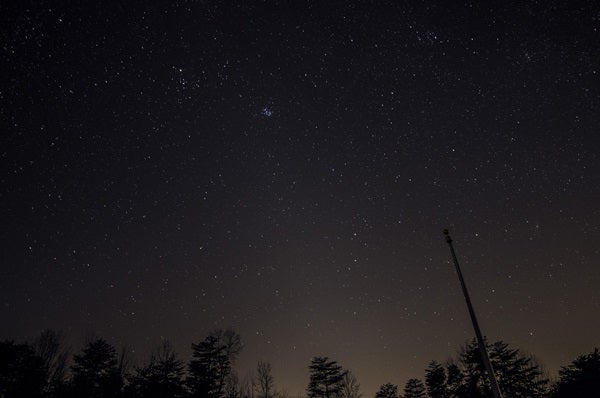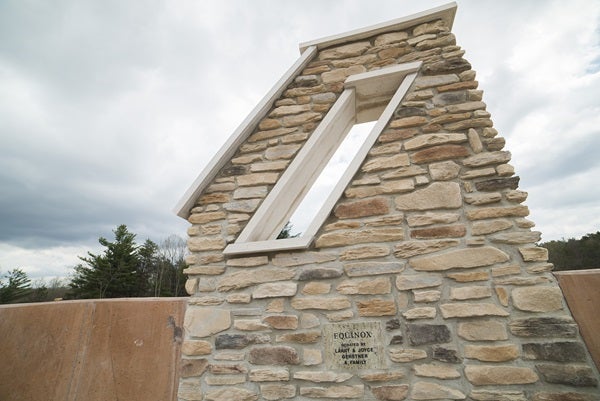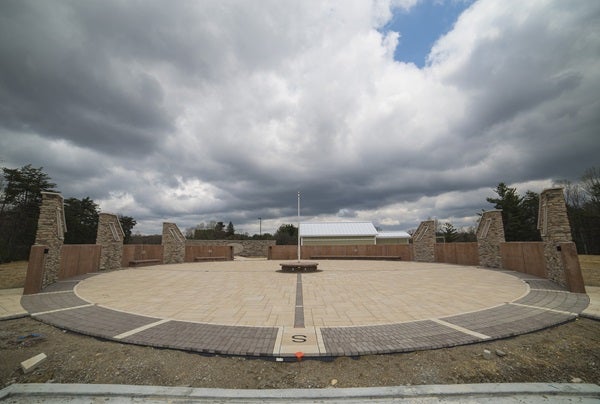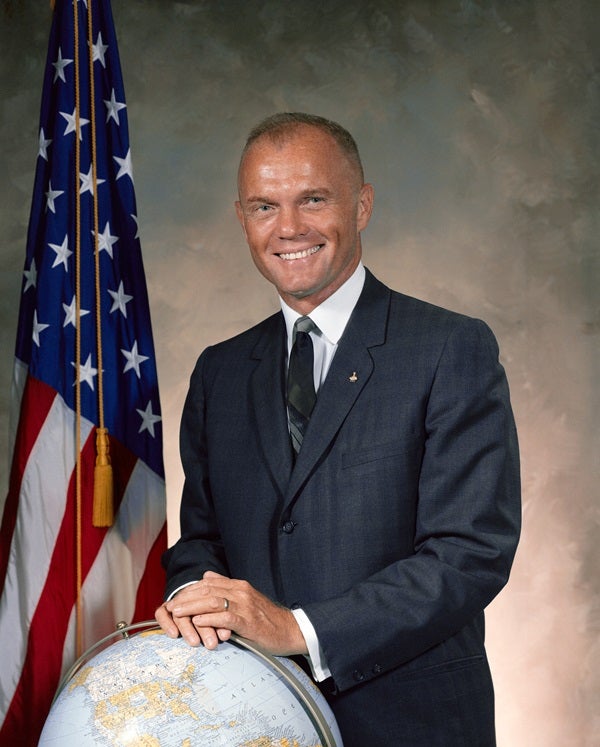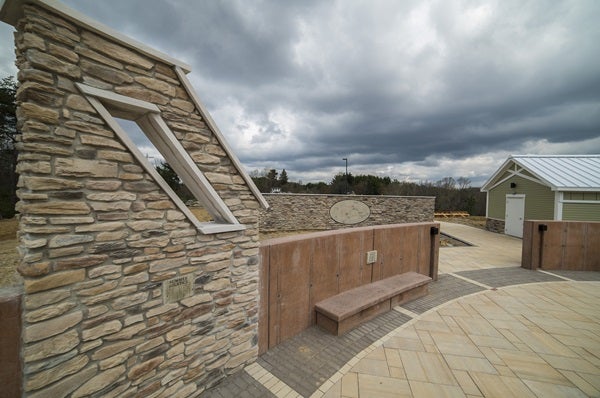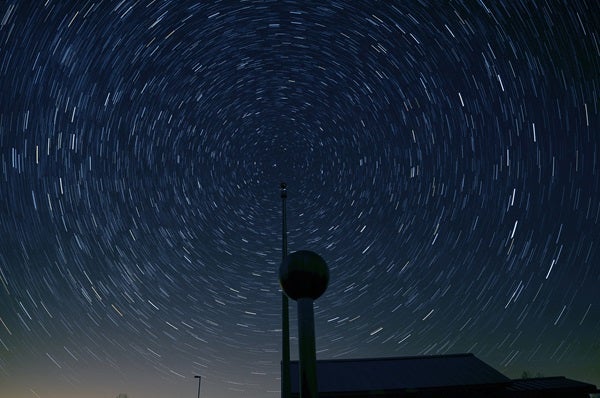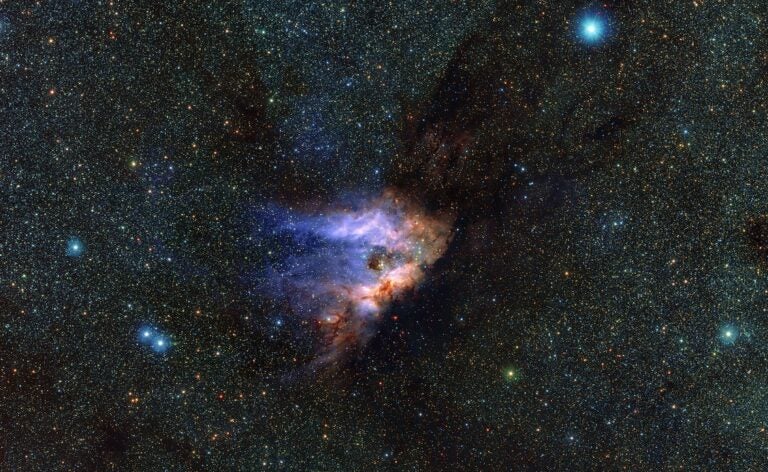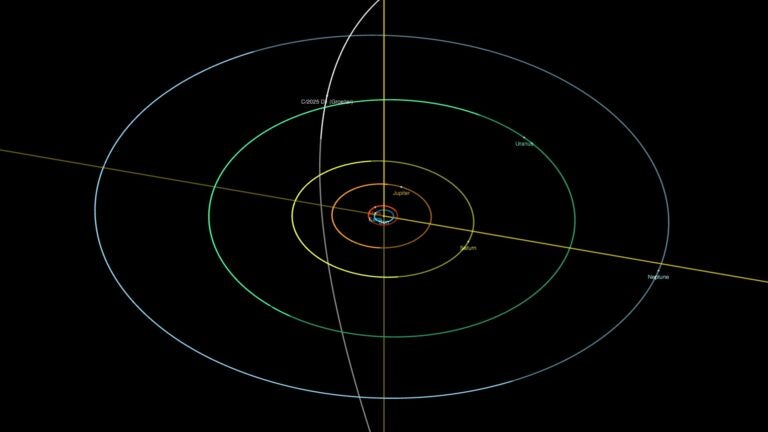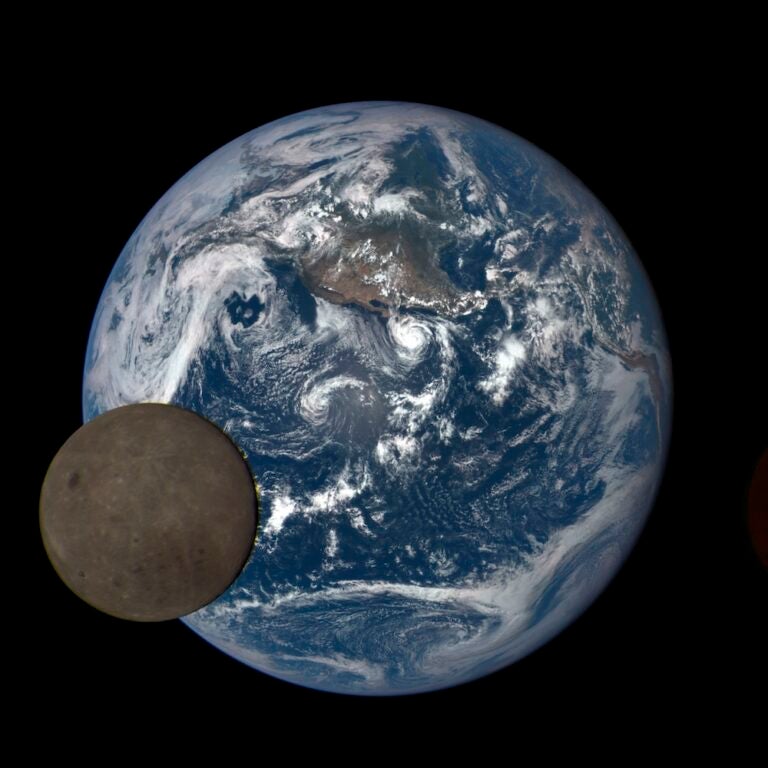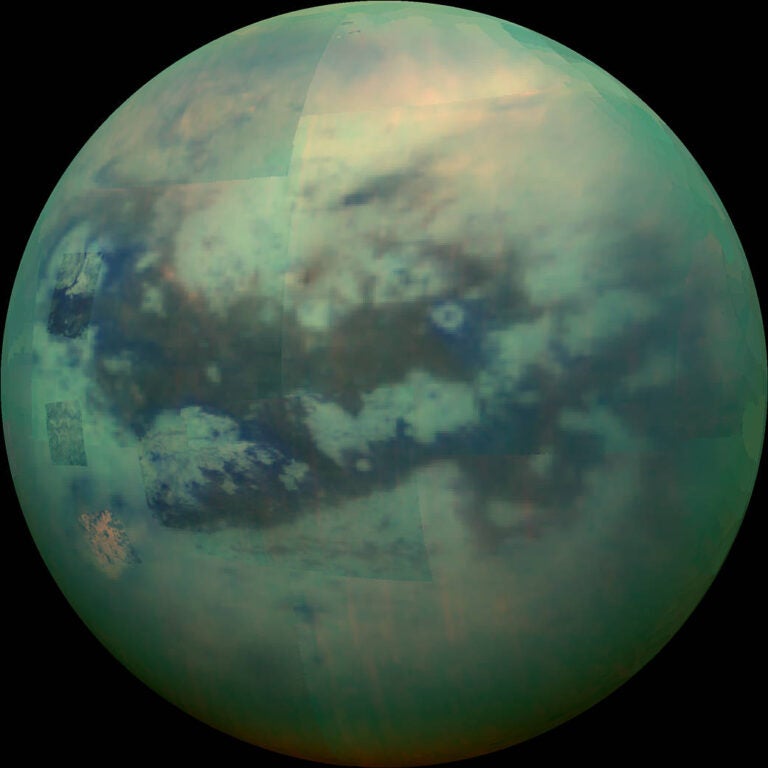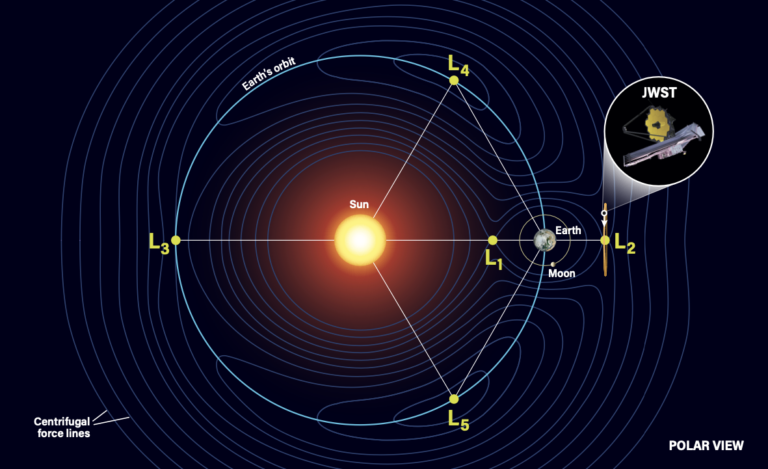Having done countless programs for the public as a member of the Columbus Astronomical Society (CAS) and a volunteer at Perkins Observatory near Delaware, Ohio, I had been on the receiving end of this question many times. This time, it came up during the annual Perseid meteor shower watch — a “program” organized by Hocking Hills State Park naturalist Pat Quackenbush and manned by members of the CAS.
And it was a good question. Casual stargazers and budding amateur astronomers in the U.S., and in particular the densely populated eastern U.S., are confronted with it all the time. Cities are awash in light pollution. Trespassing on privately held rural land is taboo and potentially dangerous. Metro parks close at dark, and those few that allow overnight stays blast their campgrounds with security lighting.
Ironically, the question was being asked under a clear, dark August sky, in just sort of place this person was looking for. The land we stood upon was part of the Hocking Hills State Park (HHSP), land freely accessible to anyone. It was outside the light dome of Columbus, Ohio – a 70-minute drive to the north. The lights of the parking lot we were in, which serviced the park Lodge and its popular restaurant, were shut off. It was atop a hill, out of the evening moisture. The summer Milky Way was clearer and brighter overhead than from almost any other place in Ohio.
But any other night, if two hundred, or just two, stargazers with their blankets, binoculars and lawn chairs were to show up on this spot, there would be cars filling the currently empty parking lot; the HHSP security officers would not be so accommodating, and the Milky Way would be lost behind the glare of parking lot lights.
The wannabe stargazers would have to fend for themselves.
I wondered how many people had given up the search for a tiny, dark, accessible, plot of land where they could plant themselves on any clear, Moonless night.
As the crowd settled in, cheering or applauding each fleeting meteor, Pat and I had a conversation. One of us asked the question: “Wouldn’t it be great if we had a real place to observe, with an observatory and some space to set up telescopes?”
On my drive home to Columbus that night, I began to dream.
I dreamt of an observatory with a roll-off roof like that that I had seen at the Wilderness Center in northern Ohio. I dreamt of it being a permanent home for a telescope with a huge mirror that would give uncommonly bright images of celestial objects, as I had seen at star parties. I dreamt of a telescope suitable for imaging. I dreamt of an open area with electrical outlets and paved pads for telescopes, as I had seen at Cherry Springs in northern Pennsylvania. I dreamt of having a place for daytime astronomy programs, like the annual Celebration of the Sun conducted by Perkins Observatory.
And I dreamt of the thousands of generations of human beings who gazed up at the sky with only their eyes.
Astronomy does not always need a telescope.
The concept fell together rapidly as I mulled over my experiences as an amateur astronomer and lover of the sky. Certain practical elements of the design were easy. As an observer, car headlights, which ruined dark adaptation when observing, had always been an annoyance. Solution: the observing site would have a wall that would block the view of approaching cars. Conversely, lack of dark adaptation amongst those recently arrived made milling about awkward and, potentially, shin-banging-ly painful. Solution: the site would be gently illuminated by dim red LEDs under any benches and seating. (I had seen an excellent example of this at the Observatorio Capricorno near Campinas, Sao Paulo, Brazil.)
Growing up in Ohio, I had visited many of the massive ancient earthworks left behind by the Hopewell, Fort Ancient, and Adena peoples, which often incorporated astonishing celestial alignments. The image of the Sun rising through a gap in a stone at Stonehenge was irresistible. I had also been struck by the mathematical beauty of the summer solstice alignments at the great Circular Kiva, where a shaft of light fell upon on a specific enclosure; and of the now destroyed “Sun dagger,” at which a “dagger” of light would pierce a carved spiral at Chaco Canyon in New Mexico. (Like many, I first learned of these pre-telescopic astronomical constructions through Carl Sagan’s Cosmos TV series.)
So the project would incorporate celestial, and in particular solar, alignments.
One failing that Stonehenge, the Medicine Wheel in Wyoming, and the Newark Earthworks in Ohio share is that the alignments assume a clear view of the horizon. When the winter solstice sun rises above the Salisbury plain in rural England, it aligns with the proper gap in the stone only at one moment- sunrise, and there are few trees to block the view. Soon thereafter, the sun slides out of view. If there are distant clouds on the horizon, the revelers that annually gather there are out of luck.
I came up with what I thought was a unique solution: the gaps through which the Sun would rise would be at an angle to the horizon. The Sun would track the slot for over half an hour, giving those present more of a chance to admire its lovely clockwork movements.
The mix of inspirations and solutions to observing problems resulted in the following:
- An observatory that would have room for a large Dobsonian telescope, a pier with a large Schmidt–Cassegrain telescope (SCT), and up to 49 visitors. The roof would roll off with a crank. There would be a “warm room” placed on the observatory’s east side to keep its heat from being blown across the view by the winds that come predominantly from the west.
- A large circular enclosure (originally planned at 100 feet [30 meters] across, but reduced to 80 feet [24 m]) bounded by a short wall around most of its perimeter, and a tall wall, spanning 15 degrees or so around the circle that would block car headlights and serve as a location for signage. This circular enclosure came to be known as “the Plaza.”
- Atop the short wall, there would be six taller walls with slots designed to catch the rising and setting sun on the Solstices and Equinoxes.
- Sunlight through these gaps would fall upon a small spherical sculpture at the center of the Plaza. This sculpture would represent Earth. During the day, the sunlight falling upon this sphere would show visitors to the Plaza where day and night fell upon Earth.
- A flagpole would mark the point of the North Celestial Pole, as seen through the axis of the “Earth” sculpture.
- The scale of the park would incorporate the scale of the solar system. The “Earth” sculpture would sit atop a central bench that would represent Jupiter. The Plaza itself would represent the scale of the Sun.
- Dotted around the grounds would be other items of astronomical interest: a sundial where a person would be the gnomon and several large stones placed around the grounds to mark the most northerly and southerly Moonrise and Moonset — an alignment that indigenous Ohio peoples had commonly incorporated into their earthworks.
Many years before, my future wife Lucia and I had attended a lecture by the architect Peter Eismann, where he had outlined his idea that a building or construction is never truly finished. As one lives in it or uses it, its design grows and changes as people discover new, and perhaps unintended, uses for its spaces. I anticipated that this project would grow and evolve as people used it. The Plaza, and the grounds it sat upon, would be a venue for future creativity and inspiration.
The first such addition came in the form of the paving stones that would line the Plaza. There is a 24-“spoke” pattern of stones that stands in either for a 24-hour clock, the azmithul directions, or coordinates in right ascension.
I created a series of 3-D animations outlining my ideas and threw them into a PowerPoint presentation, which I shared with astronomy-minded friends.
I was fanatical about the idea. CAS Club president Bill Kramer took to calling the idea “Hoehne-henge.”
At some point, Pat Quackenbush brought up the idea with members of a (then) small charitable organization called The Friends of the Hocking Hills State Park (FHHSP),’ which was dedicated to taking on projects that would improve the park. The group had already funded an archery range and a butterfly enclosure, and were in the midst of a massive project that would soon relocate a section of busy Route 664 a comfortable distance away from the upper lip of the park’s main attraction, Old Man’s Cave — turning a busy and dangerous roadside attraction into a placid landscaped environment.
Over the next few years, I found myself being invited to events and FHHSP fundraisers where I shared the plan for what was then being called “The Hocking Hills Astronomy Park.” I underscored the beauty and preciousness of the clear, unmarred, night sky and of how the Hocking Hills was one of the few refuges in Ohio where this could be appreciated.
In the audience of a 2005 presentation at the Hocking Hills Tourism Association were retired architect Clyde Gosnell and his wife, retired anesthesiologist Louise (Omie) Warner.
Forty years earlier, Clyde had almost single-handedly lodged a successful campaign to save the beloved Ohio Theater in Columbus from the wrecking ball. Omie had founded the Stratford Ecological Center near Delaware, Ohio. In 2005 they were involved with FHHSP and had done much of the planning and fundraising for the Route 664 project.
Clyde and Omie decided Hocking Hills Astronomy Park was the next, and perhaps final, project that they wanted to take on. Their experience at the Stratford Ecological Center — an “educational farm” where students could learn about nature and agriculture — made them particularly enthusiastic about the educational aspects of the project. They believed the project could be an asset to the region, and could inspire young people to follow careers in science and engineering.
The two, along with the FHHSP, began working full time to build interest in the project and solicit donations.
Things went slowly at first. The amount of money needed for the project seemed impossibly vast to me, but Clyde and the members of the FHHSP seemed convinced that it could be achieved.
When the financial collapse happened in 2008 and wallets tightened, momentum for the project slowed, and I began to consider that it would remain a beautiful dream. The calls for talks slowed down.
However, Clyde and Omie and the FHHSP continued to slowly build interest in the project. In late 2013 it appeared that their hard work was paying off. A significant amount of seed money had been raised and the organization was ready to start campaigning full bore for the project. To do this, formal plans for the project would be required: architectural drawings, materials and expense estimates, and a dedicated site for everything to be built.
I already had what seemed to be an ideal site in mind. Several years earlier, Pat Quackenbush had given me a tour of various locations within the Hocking Hills State Park. An ideal site would have low or distant trees, allowing the rising and setting Sun to be seen (as well as the stars). It would have to be dark, out of direct sight of the security lights dotted around the landscape. It would have to have enough space for the Plaza, observatory and ample parking. (Would there be a star party in the future?) Finally, it would have to sit well above the valleys and hollows that made the park a popular destination for hikers and photographers. Members of the CAS knew from experience that damp Ohio air would frequently turn to dew and fog in the low areas in the distressingly early evening.
The one location that seemed to meet all these criteria had not been available just a few years before. It was a huge field filled with dirt and rubble gouged out of a hillside from the Route 664 project. It was large, flat, had good sightlines, and was at one of the highest points in the park. (Unfortunately, as we were to later discover, it was also bit unstable.)
Bids were solicited for an architecture firm for the project to prepare the drawings and manage the construction. Lucia encouraged her firm, M+A Architects, to place a bid, and they enthusiastically took it and called upon her as project manager. This bode well for the success of the project. Things get done more quickly when your main consultant is your roommate. Over the next few years, a shockingly high percentage of phone calls and dinner talk between Lucia and me involved the minutiae of the project.
The project came to be known as the John Glenn Astronomy Park. Within the Friends of the Hocking Hills State Park, it was referred to as, simply, “JGAP.” Media coverage of the project began to increase.
An observatory needs telescopes, and I put out a call to members of the CAS to be on the lookout for two suitable telescopes: a large Dobsonian-style telescope and an SCT suitable for imaging. Then CAS president Joe Renzetti came through in both instances. First, he found a telescope for sale by Richland Astronomical Society member Mark Vanderaar. Mark offered his hand-built 28-inch Dobsonain, with computer-controlled servomotors. Enthusiastic about the project, he reduced the price. Later, Joe spotted a good deal on a C-14 on the website www.cloudynights.com.
Charting the skies
In June 2017, after countless hours of work by all involved, a line of the people most closely associated with the project donned hard-hats and turned over ceremonial shovels of dirt for a row of cameras.
The Setterlin Company was chosen as the contractor. They were extraordinarily receptive to the various unusual requirements of JGAP.
A critical element of the park was getting the solar and celestial alignments correct. Unlike the builders of Stonehenge, modern construction worked within a very strict timeline and a limited budget. We could not afford to simply wait for the Sun to rise on a given date to check proper alignment. We would have to pre-plan the alignments.
A surveyor was hired to find the north-south line. However, it was not certain that this would line up with the heavens. Surveyors base their measurements on local, map and datum point-based assessments of north and south.
The best way to be certain that everything was lined up properly was to use the stars themselves.
The telescope sat at the center of the Plaza where the Earth Sphere would soon be installed. It was precariously balanced atop an empty wood form that would soon become the Jupiter Bench. I worried desperately that the tripod legs of the scope had been bumped or some calculation had been done wrong, or there was something else that had been overlooked.
On December 21, Clyde and Omie paid a visit to the construction site at sunset and confirmed, in photos they proudly took, that, indeed, the slot was aligned correctly. In the picture, they smile broadly next to the Earth Sphere, which is gently glowing in a perfectly positioned shaft of muted sunlight.
A few weeks earlier, before the Earth Sphere had been installed, the flagpole went up. I paid a visit on the first clear, cold night (the sky was beautiful framed as it was by the Plaza’s walls), to confirm that it was properly placed. Using an empty tripod to stand in for the soon-to-be-installed Earth Sphere, I found it was, happily, exactly on a line with North. Unfortunately, the flagpole was about a foot too tall. Josh Zerneckel, the head contractor, gamely made the required adjustment and the top of the flagpole now sits, as seen through a window in the Earth Sphere, exactly at the North Celestial Pole.
A work in progress
Work now proceeds on getting the telescopes installed, planting grass on the muddy field, creating a small amphitheater out of stones, installing a kiosk to allow visitors to freely sign in and use the Plaza for their own stargazing.
On March 17, a handful of members of the Columbus Astronomical Society set up telescopes in the Plaza’s 80-foot-wide (24 m) circle of stone, and gave its features a shakedown. The power outlets worked, the Plaza provided a comfortable and stable surface on which to observe, and the roll-off roof of the observatory slowly slid back as a large crank was turned. The flagpole and Earth Sphere pointed directly at the North Celestial Pole and Polaris rolled around the trunk three quarters of a degree away, the stars rose at the same angle as the Sun slots, and the curved walls framed the sky, gently lit by a First Quarter Moon.
I felt a warm kinship with the preindustrial peoples who made pilgrimages to their own celestial sites, both communal and sacred, and gazed up at the celestial sphere as if it were a living work of art.
On June 21, to coincide with the summer solstice, we will have our Ribbon Cutting. If the sky is clear, the pinnacle of the event will be the sun piercing the summer solstice slot and falling upon the Earth Sphere at the center of the Plaza and softly glowing, reminding all present of the clockwork beauty of the universe.
You can visit the John Glenn Astronomy Park online at jgap.org, or check out the park’s Instagram (@jgastropark) and Facebook.

